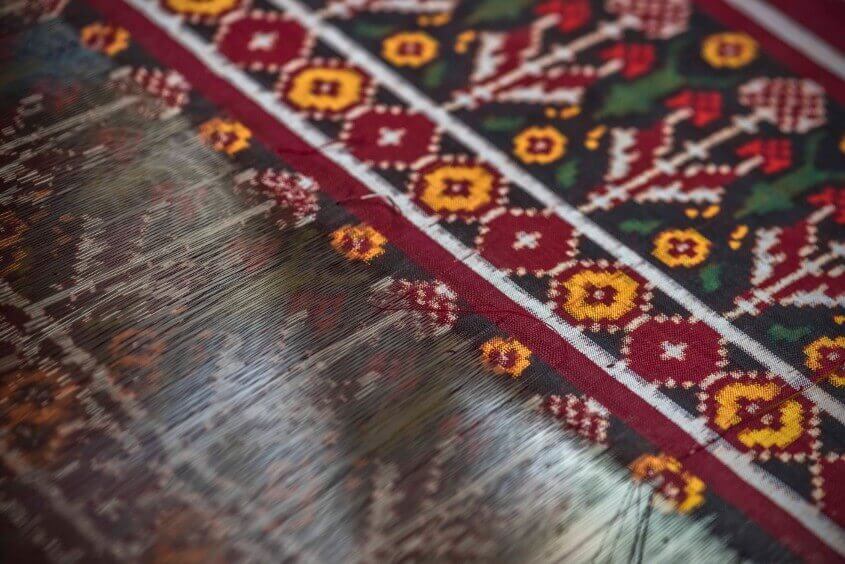
These days, getting a product quickly is one of the most important aspects of a business, but it might be totally opposite in the case of Patan Patola.
History of Patan Patola
In this post, we are talking about the history of Patan patola, which goes back decades. Patan Patola takes the combined effort of four weavers and a time of about 4 to 6 months to weave a single saree.
Ikat – Patola – Queen of Silks
Talking about the Patan Patola sarees, they are unique, made from silk usually as well as is a double ikat. The double Ikat means that once the fabric is woven, you just can’t differentiate between the sides because the color intensity, as well as the feel and look, are quite the same on both sides.
Ikat is considered quite auspicious in different cultures across the world and the same is the case with Patola. It is such a cloth that has been a luxury of the wealthy and aristocrats for a long time and in events such as marriages and festivals.
Patola textiles have been reserved for people with wealth for a long time because of their delicacy as well as price due to which they couldn’t be bought by everybody. This was something that made the Patola sarees a status symbol in Gujarati society. Not only that but they were also gifted to the kings to propose good relations.
Another really interesting thing about Patola, as we already mentioned is that it is worn on special occasions. For example, King Kumarpal wore them once while offering prayers and performing religious ceremonies. As he wanted to be holy and unmarked on such occasions. This was the event that triggered the specialty and pompousness of Patola in Gujarati culture.
World
In Indonesia too, Patola gained a lot of significance between the 15-16 centuries as Indonesians wore it as a matter of great pride. It was called the cloth of ma’a or mawa which technically meant ‘a cloth by the God’. This is such a cloth which has been seeking attention for a long and happens to be the most beautiful at the same time.
Patola is considered the ultimate manifestation of weaving perfection because even a single displacement of a thread might lead to a deformed pattern of the saree.
Not only that, but the dying and weaving process is also quite complicated and requires mathematical precision with a vivid imagination.
Conclusion
Hanging in almost every popular textile museum in the world, it’s not hard to understand why it’s such a precious procession. The fabric may be of exceptional quality or bright in color for a variety of reasons. But in reality, Patola,s history does not diminish like its color.
Read Next Blog:
Why Is Ahmedabad Known As The Manchester of India?







